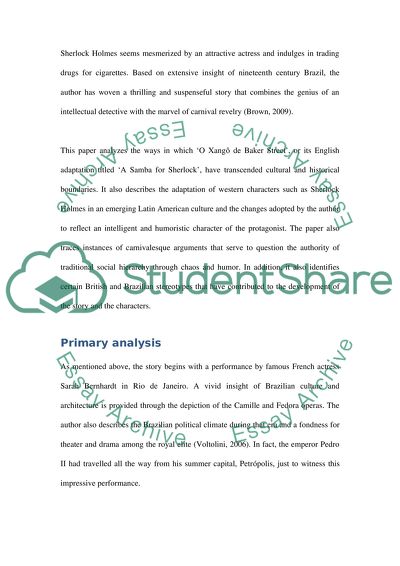Cite this document
(“A Samba for Sherlock Essay Example | Topics and Well Written Essays - 2250 words”, n.d.)
Retrieved from https://studentshare.org/literature/1398087-a-samba-for-sherlock
Retrieved from https://studentshare.org/literature/1398087-a-samba-for-sherlock
(A Samba for Sherlock Essay Example | Topics and Well Written Essays - 2250 Words)
https://studentshare.org/literature/1398087-a-samba-for-sherlock.
https://studentshare.org/literature/1398087-a-samba-for-sherlock.
“A Samba for Sherlock Essay Example | Topics and Well Written Essays - 2250 Words”, n.d. https://studentshare.org/literature/1398087-a-samba-for-sherlock.


